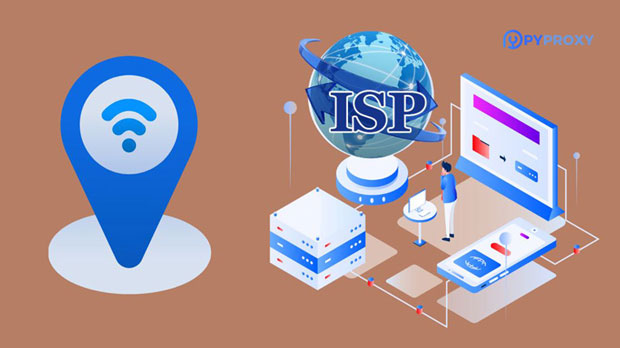In today’s digital age, many YouTube users turn to proxies for enhanced browsing experiences, whether for accessing region-restricted content or maintaining privacy. However, using proxies to access YouTube raises serious concerns about account security. Proxies, while offering anonymity, can also introduce significant risks, such as account hijacking, data leakage, and exposure to malicious activities. This article explores the potential impacts of using proxies on YouTube account security, breaking down the associated risks and offering solutions to mitigate these dangers. Understanding these threats is essential for anyone who uses proxies for browsing or viewing content on YouTube. Understanding Proxies: What Are They and Why Do Users Rely on Them?Proxies are intermediary servers that act as a bridge between a user's device and the internet. When you use a proxy, your internet traffic is rerouted through the proxy server, masking your real IP address. This process helps in accessing content that may be restricted in certain regions or adds a layer of anonymity while browsing. Many YouTube users rely on proxies for various reasons, including:- Accessing region-blocked content: Certain videos or channels may be restricted in specific countries or regions, and proxies allow users to bypass these limitations.- Enhanced privacy and anonymity: Proxies obscure users' IP addresses, making it harder for third parties to track browsing habits or collect personal information.- Bypassing network restrictions: In some cases, proxies allow users to evade content filters or firewalls set by schools, workplaces, or governments.However, while proxies offer these benefits, their usage can lead to potential risks when it comes to account security.Impact of Proxies on YouTube Account SecurityWhile proxies provide anonymity, they can also expose users to several security risks that could compromise their YouTube accounts. Here are the primary concerns:1. Account Hijacking and Unauthorized AccessOne of the most significant risks when using a proxy is the potential for account hijacking. Proxies, especially free ones, may not be secure, and cybercriminals can exploit them to gain unauthorized access to user accounts. When you connect to a proxy server, especially an unreliable or compromised one, your login credentials, including your Google account information, might be intercepted. Hackers could then use these credentials to take control of your YouTube account, potentially causing harm such as:- Posting unauthorized videos or comments.- Accessing personal information linked to your account.- Even deleting content or altering account settings.To mitigate this risk, it is advisable to use only trusted proxy services and implement additional layers of security, such as two-factor authentication (2FA).2. Data Leakage and Privacy RisksProxies handle your data, meaning they have the potential to log or even sell your browsing information. This raises concerns about data leakage, especially if you are using free proxies that may not be trustworthy. When using proxies, you might unknowingly share sensitive personal data, including login credentials, video watch history, and browsing patterns. Here’s how data leakage can affect YouTube account security:- Exposing personal information: If your data is intercepted or logged by a malicious proxy server, personal details associated with your YouTube account can be exposed.- Targeted attacks: Cybercriminals might use your browsing information to launch more targeted phishing attacks, social engineering tactics, or credential stuffing attacks.To avoid data leakage, it’s crucial to opt for a reliable, paid proxy service that prioritizes security and does not log users' data.3. Risk of IP Blacklisting and Account SuspensionUsing proxies can result in your YouTube account being flagged or suspended. YouTube actively monitors suspicious activity on its platform, and when it detects multiple users accessing the same content from different geographic locations, it might suspect bot-like behavior or an account being compromised. If YouTube identifies unusual access patterns from proxy servers, it can take the following actions:- Account suspension: If YouTube suspects that an account is using a proxy to circumvent regional restrictions, the account could be temporarily or permanently suspended.- IP blacklisting: Repeated use of proxies might lead to IP blacklisting, making it difficult to access YouTube altogether from that particular proxy or even your regular connection.To prevent such risks, it’s important to ensure that the proxy does not trigger flags or suspicious activity patterns on YouTube’s monitoring systems.4. Malware and Phishing AttacksNot all proxies are created equal, and some free or unverified services may inject malware or redirect users to phishing websites. Malicious proxies can infect your device with malware that might compromise the security of your YouTube account. Some proxies are even designed to steal login credentials by tricking users into visiting fake login pages. Here's how such attacks can affect your account:- Phishing attacks: Malicious proxies may redirect users to fraudulent login pages that look identical to YouTube’s official page. If users unknowingly enter their credentials, hackers can steal this information.- Malware: Some proxies may carry malware that compromises the security of your device and the data stored within it, including your YouTube account login details.To avoid these risks, only use trusted proxy services with a reputation for securing user data and preventing malicious attacks.Best Practices for Ensuring YouTube Account Security When Using ProxiesIf you choose to use a proxy to access YouTube, there are several steps you can take to ensure that your account remains secure:1. Use Trusted, Paid Proxy ServicesFree proxies often come with significant risks, including poor security and potential for data leakage. Paid proxies typically offer better encryption and enhanced privacy features, reducing the likelihood of malicious attacks. Ensure that the proxy provider has a strong reputation and offers clear privacy policies regarding data usage.2. Enable Two-Factor Authentication (2FA)Two-factor authentication is one of the best ways to secure your YouTube account. Even if your credentials are compromised, 2FA adds an additional layer of protection, ensuring that unauthorized users cannot access your account.3. Regularly Monitor Account ActivityMonitor your YouTube account for any suspicious activity, such as changes to your personal information, unauthorized videos or comments, or logins from unusual locations. If you notice any unusual behavior, take immediate action to secure your account, such as changing your password or logging out of all sessions.4. Avoid Using Free Proxy ServicesWhile free proxies might seem appealing, they often come with hidden dangers, such as the risk of malware or data leakage. Always opt for reputable, paid proxy services that offer secure encryption and clear privacy policies.ConclusionUsing proxies to access YouTube can enhance your browsing experience, but it also brings considerable risks to your account’s security. The potential for account hijacking, data leakage, IP blacklisting, and exposure to malware or phishing attacks makes it crucial to choose trusted proxies and implement additional security measures like two-factor authentication. By being vigilant and taking the necessary precautions, you can enjoy the benefits of using proxies while minimizing the risks to your YouTube account security.
Jun 30, 2025


































































